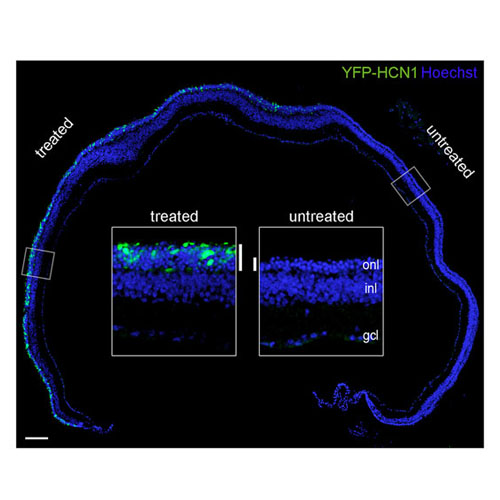Loss of HCN1 enhances disease progression in mouse models of CNG channel-linked retinitis pigmentosa and achromatopsia
05-Jan-2016
Human Molecular Genetics, 1–11, doi: 10.1093/hmg/ddv639
Most inherited blinding diseases are characterized by compromised retinal function and progressive degeneration of photoreceptors. However, the factors that affect the life span of photoreceptors in such degenerative retinal diseases are rather poorly understood. Here we explore the role of hyperpolarization-activated cyclic nucleotide-gated channel 1 (HCN1) in this context. HCN1 is known to adjust retinal function under mesopic conditions, and although it is expressed at high levels in rod and cone photoreceptor inner segments, no association with any retinal disorder has yet been found. We investigated the effects of an additional genetic deletion of HCN1 on the function and survival of photoreceptors in a mouse model of CNGB1-linked retinitis pigmentosa (RP). We found that the absence of HCN1 in Cngb1 knockout (KO) mice exacerbated photoreceptor degeneration. The deleterious effect was reduced by expression of HCN1 using a viral vector. Moreover, pharmacological inhibition of HCN1 also enhanced rod degeneration in Cngb1 KO mice. Patch-clamp recordings revealed that the membrane potentials of Cngb1 KO and Cngb1/Hcn1 double KO rods were both significantly depolarized. We also found evidence for altered calcium homeostasis and increased activation of the protease calpain in Cngb1/Hcn1 double KO mice. Finally, the deletion of HCN1 also exacerbated degeneration of cone photoreceptors in a mouse model of CNGA3-linked achromatopsia. Our results identify HCN1 as a major modifier of photoreceptor degeneration and suggest that pharmacological inhibition of HCN channels may enhance disease progression in RP and achromatopsia patients.











